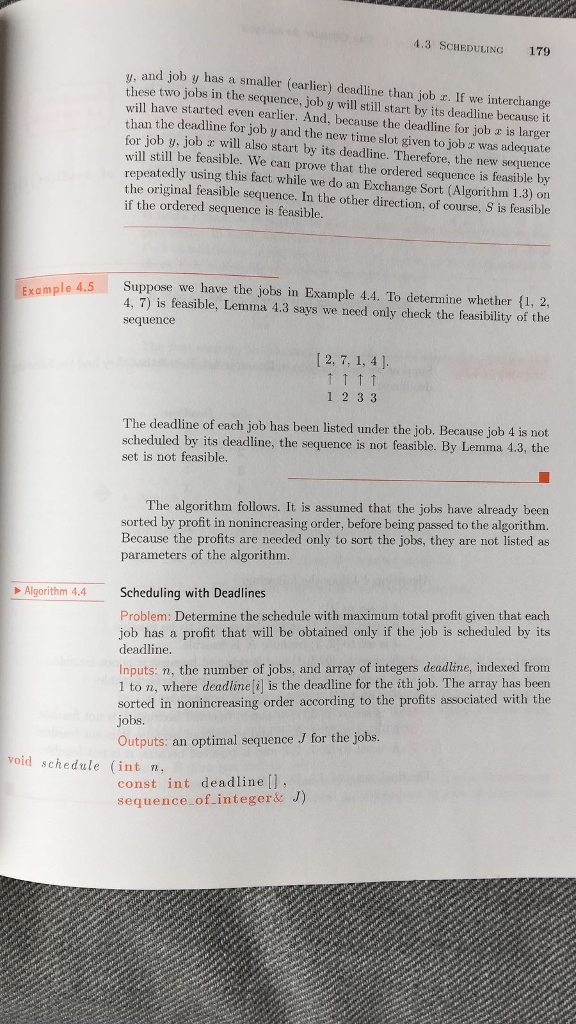Answered step by step
Verified Expert Solution
Question
1 Approved Answer
Schedule (Greedy) Manually walk through the algorithm 4.4 (pp., 179-180) as demonstrated in example 4.6 to solve the below problem instance. Show each step as
Schedule (Greedy) Manually walk through the algorithm 4.4 (pp., 179-180) as demonstrated in example 4.6 to solve the below problem instance. Show each step as shown in the example and then the final value of feasible sequence and profit. Job : 1 2 3 4 5 6 7
Deadline: 2 3 2 4 4 2 1
Profit : 65 50 47 32 30 15 10


Step by Step Solution
There are 3 Steps involved in it
Step: 1

Get Instant Access to Expert-Tailored Solutions
See step-by-step solutions with expert insights and AI powered tools for academic success
Step: 2

Step: 3

Ace Your Homework with AI
Get the answers you need in no time with our AI-driven, step-by-step assistance
Get Started


